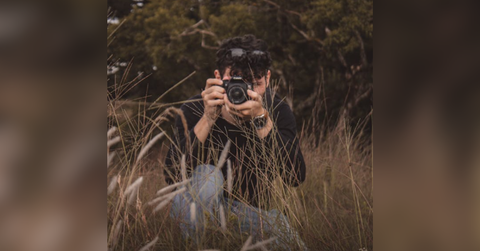Life Under the Lens: How Stars Trade Privacy for Fame

Oct. 30 2025, Published 2:30 a.m. ET
He watches fame work like a spotlight that refuses to dim. At first it feels warm: attention, access, the sudden ease with which doors open. Then the beam hardens. Schedules fill with interviews, corridors narrow with cameras, and everyday errands acquire an audience. In this economy of visibility, the public makes a quiet bet that proximity equals truth, while the star learns that exposure often edits context out of the frame.
The bargain is rarely explicit. Early in a career, visibility seems like a smart bet on momentum — more posts, more premieres, more press. But the margin thins. A birthday dinner becomes content; a hospital visit becomes speculation. Even neutral gestures are read as signals. Management urges “authenticity,” platforms reward oversharing, and algorithms convert private life into a scoreboard. The star realizes the real price: time alone without narration. Someone always wants more — a look inside the house, a comment on family, a selfie “for proof.” The third, quiet bet is that refusing will look like arrogance.
Public fascination doesn’t arrive empty-handed; it brings systems that eat privacy for fuel. Paparazzi map routines. Leaks turn homes into coordinates. Fan forums scrape metadata for clues. Contracts contain morality clauses that pull personal behavior into corporate risk. The star learns to speak in smooth, repeatable sentences and to move through airports as if on rails, while a second life — invisible and unphotographed — shrinks to fit the spaces left over.
Pressures that erode a star’s private life
Ubiquitous cameras: phones convert every bystander into press; “off the record” becomes an endangered idea.
Platform incentives: algorithms favor frequency and intimacy, rewarding confession over craft.
Commercial tie-ins: brand deals blur lines between personal moments and sponsored deliverables.
Legal hooks: morality clauses and broad contracts make private actions business liabilities.
Parasocial demand: audiences feel entitled to updates, framing silence as betrayal.
The narratives that surround fame rarely account for safety. Stalking, doxxing, and swarming don’t trend as easily as red carpets, but they define how a day feels. A star learns to read rooms the way security does: exits, sightlines, unfamiliar faces. They memorize a new script for ordinary life — alternate routes, staggered arrivals, decoy bookings — so that “going home” is not a public event.
Work complicates the picture. Directors ask for “access” to real pain; interviewers invite “one more personal question”; publicity wants “behind-the-scenes” footage that inevitably turns into “behind-the-life.” The craft that built the platform recedes behind commentary about relationships, kitchens, and parenting choices. The paradox grows familiar: the more someone shares, the more the internet asks what they are still hiding.
Not every star surrenders the perimeter. The ones who endure treat boundaries as technique, not tantrum. They build routines that separate the person from the persona and invest in boring, reliable systems: vetted teams, nondisclosure hygiene, travel plans that prioritize exits over entrances. They learn to use silence with intent — to say “not for me” without turning it into a fight — and to let a rumor age out rather than feeding it oxygen.
Boundaries that help reclaim space
Calendar discipline: designate “non-extractive” windows — no press, no posts, no meetings that mine the personal.
Layered access: limit who knows addresses, schools, medical providers; rotate details when necessary.
Narrative control: announce work, not whereabouts; share finished stories, not live locations.
Security-by-design: vary routes, use arrival buffers, and separate travel bookings from lodging choices.
Language scripts: calm, repeatable phrases (“I’m keeping that private,” “Let’s stay with the project”) that de-escalate.
Media literacy becomes part of survival. He sees seasoned stars redirect questions toward craft and collaborators, not because they’re evasive, but because craft is why they are in the room. They comp the ticket back to work: cinematography, rehearsal, writing. The more a conversation returns to what can be evaluated on screen, the less it gnaws at what belongs at the kitchen table.
There’s also a cultural shift underway. Younger audiences — raised on constant posting — know what it costs. They are quicker to accept “no comment,” more tolerant of delayed announcements, and more likely to demand safety protocols at public events. Industry teams respond with guidelines that treat privacy as a productivity tool, not a personal quirk: the steadier a life is off camera, the longer a career can last on it.

Of course, trade-offs persist. Some stars decide that controlled transparency is better than rumor; others vanish between projects and let the work speak alone. Neither path is easy. The first risks blurring the map; the second risks being rewritten by absence. The only constant is attention itself, which behaves like weather: it can be read, prepared for, and sometimes redirected — never fully tamed.
He leaves the thought with a simple measure: privacy is not secrecy; it is stewardship. Fame can buy comfort, but it also rents out context. The stars who keep a self they can live with treat their lives as something more than content — something that doesn’t need to be proved, only protected. They choose when to step into the beam and when to let the light pass over, not as defiance, but as design.


